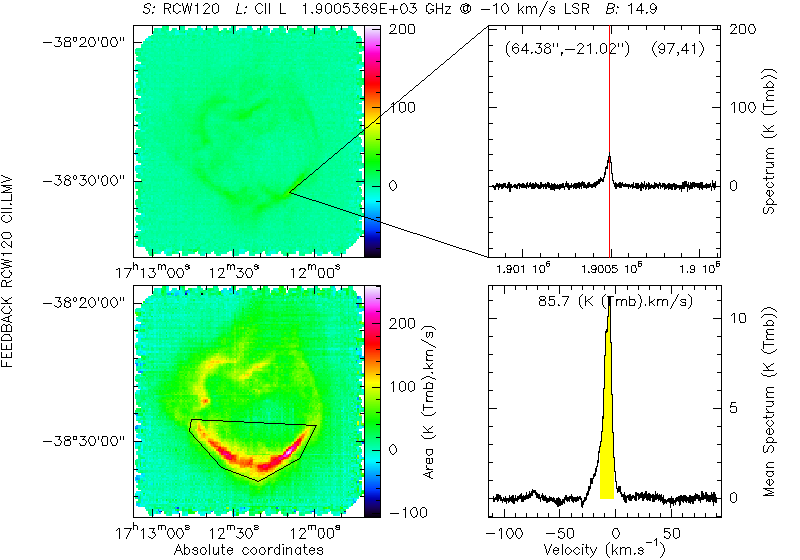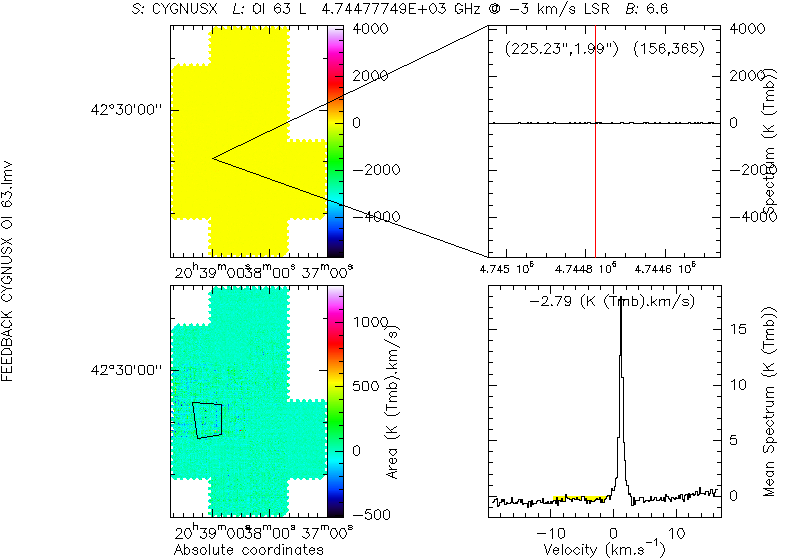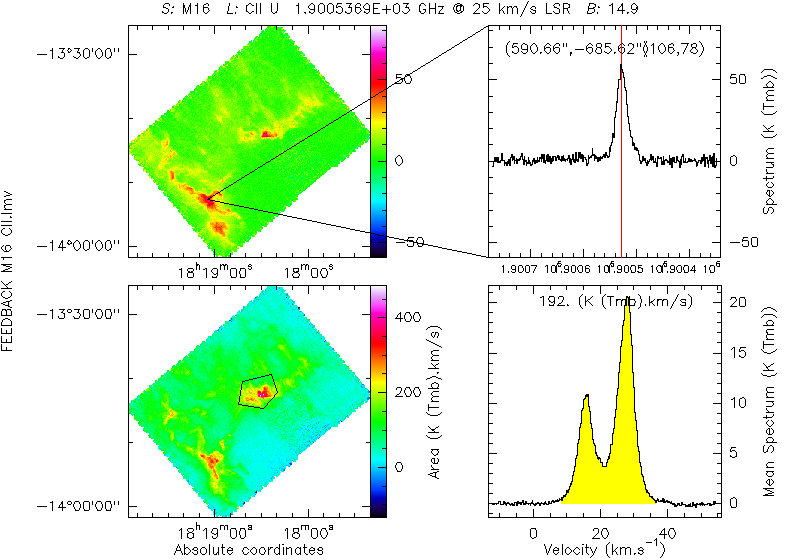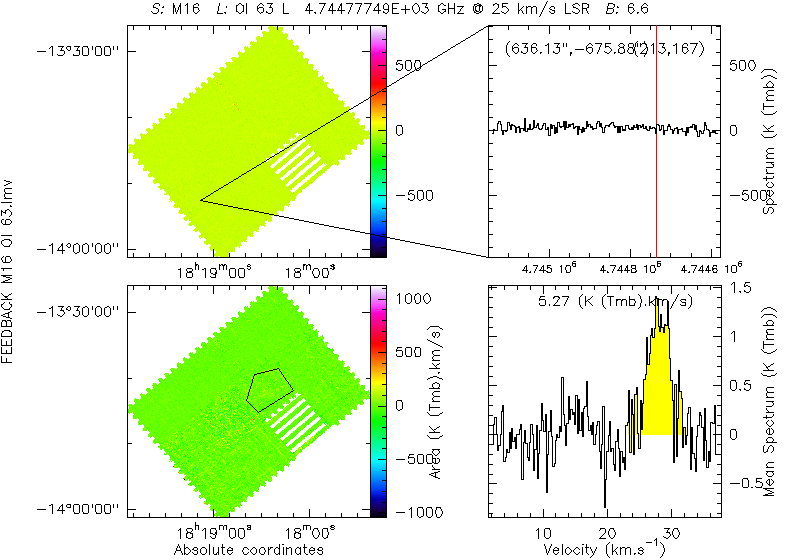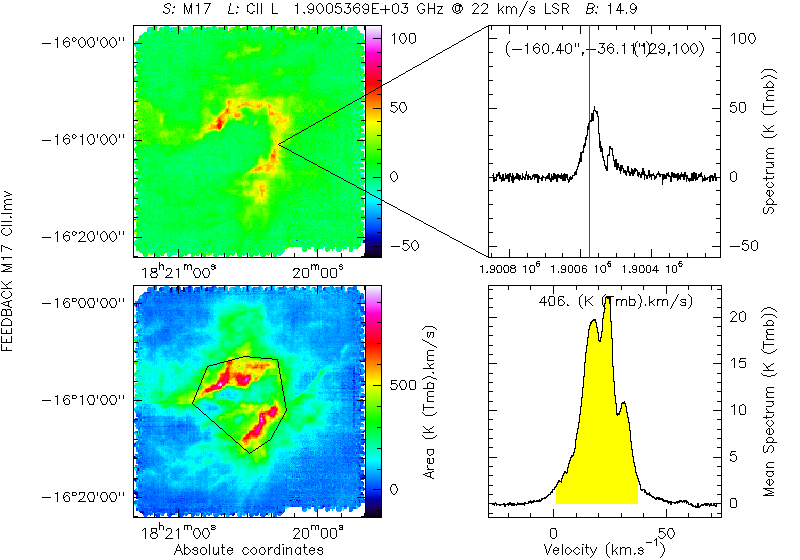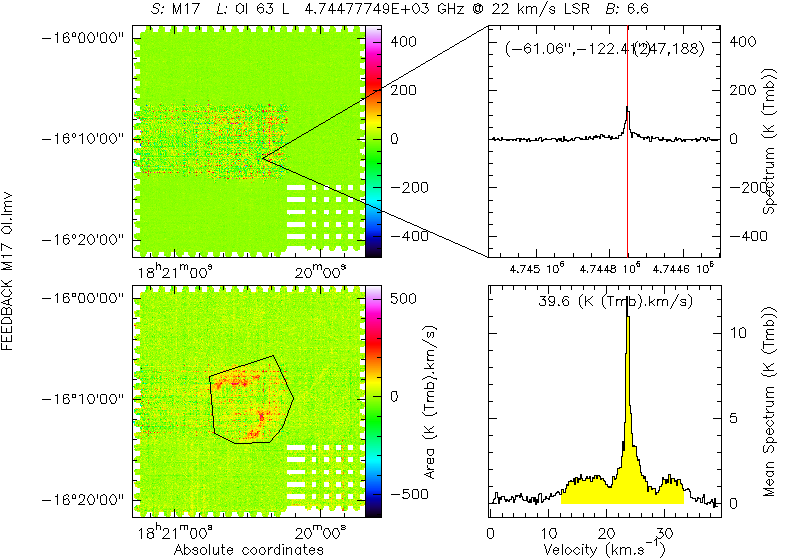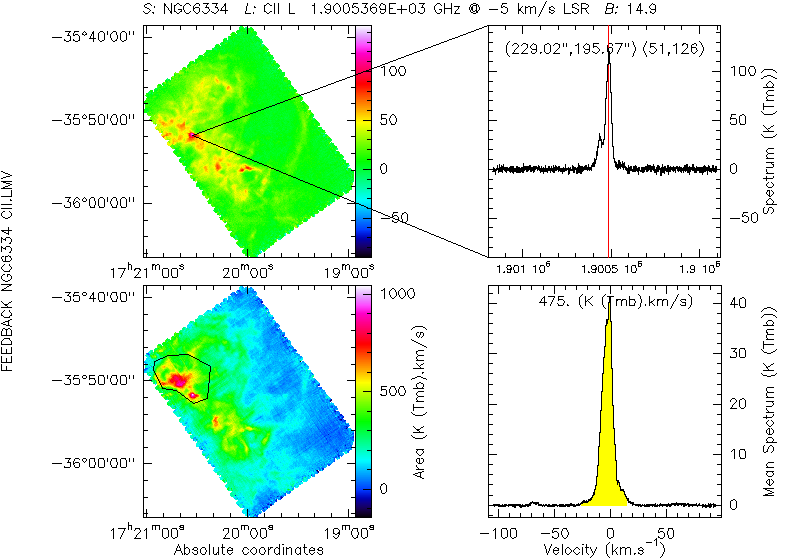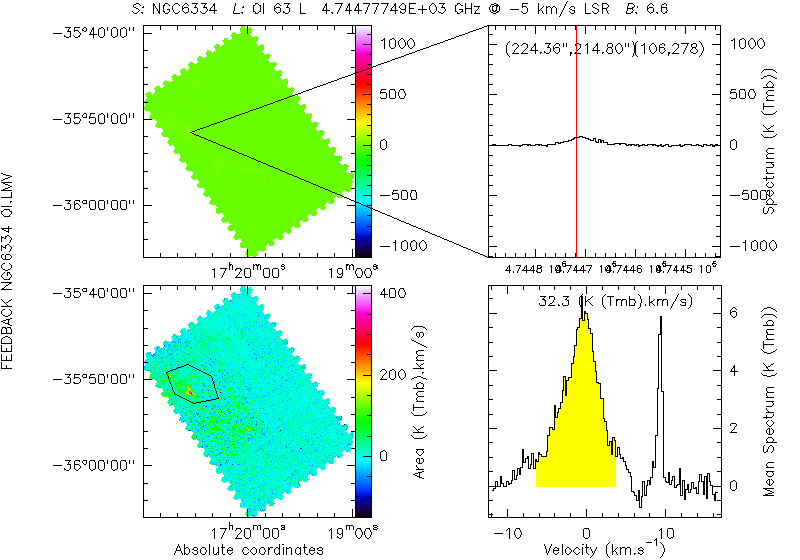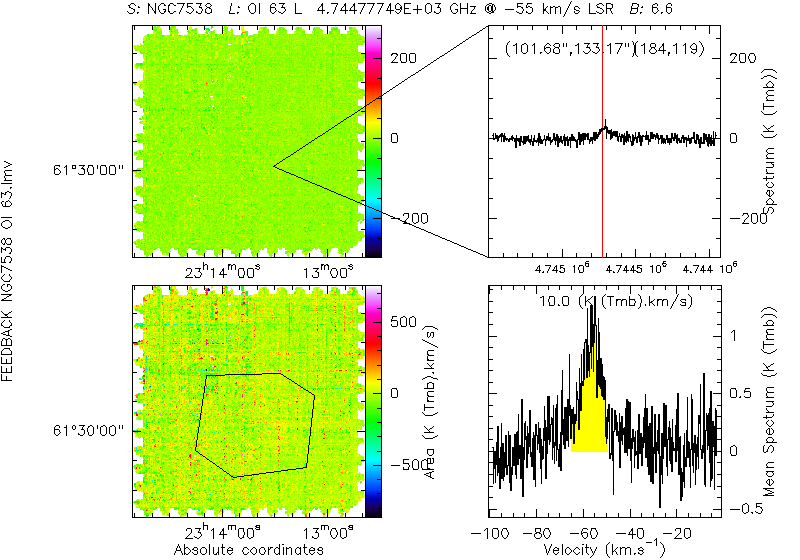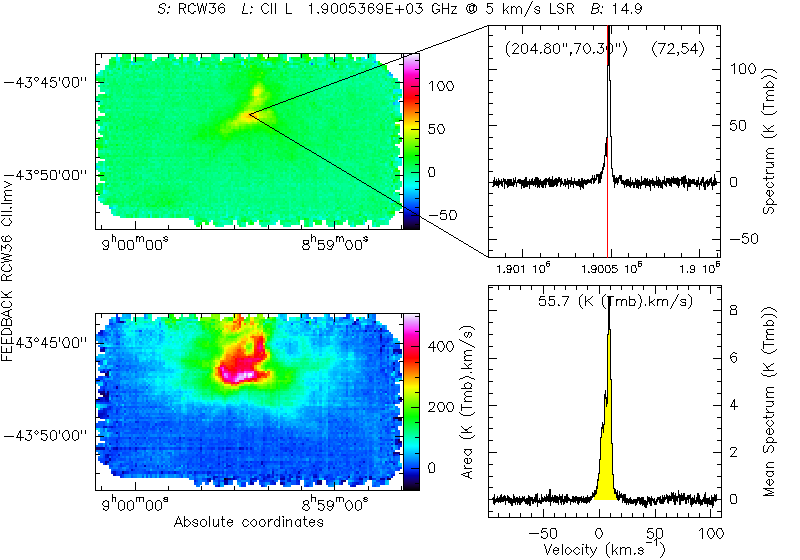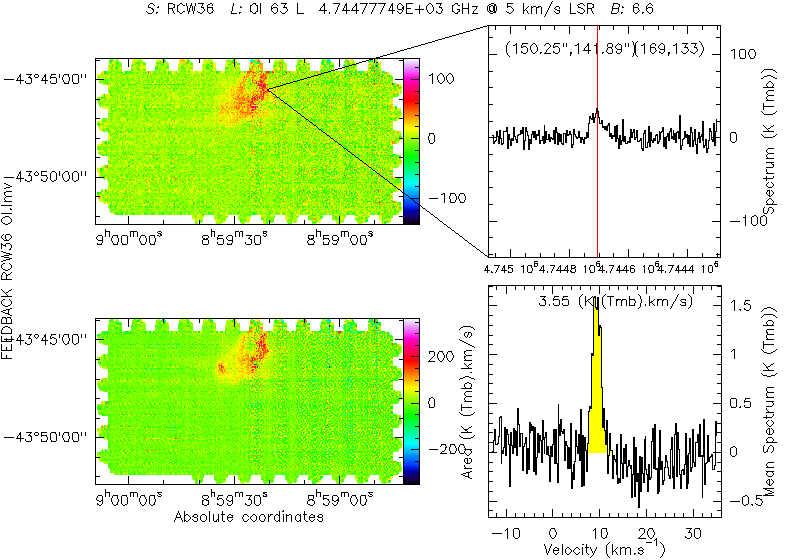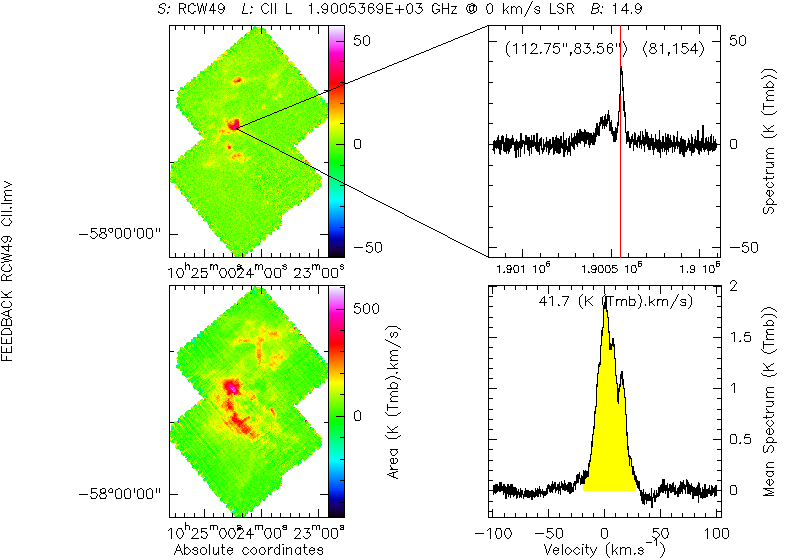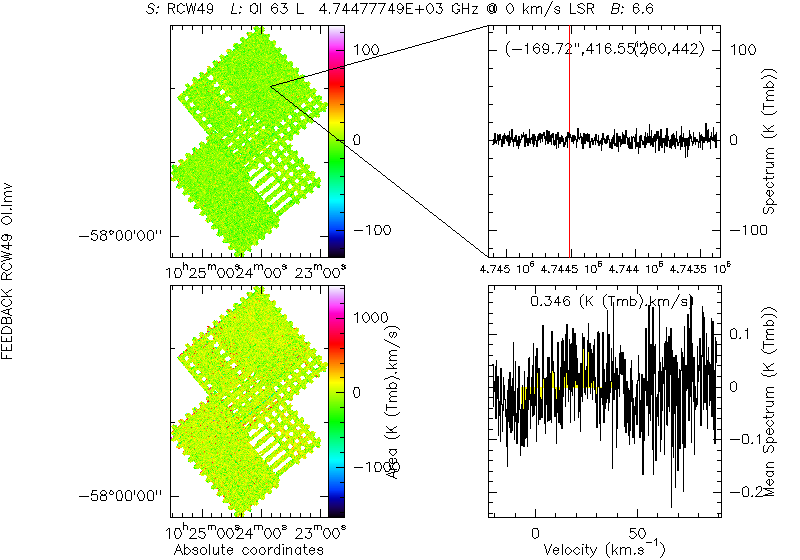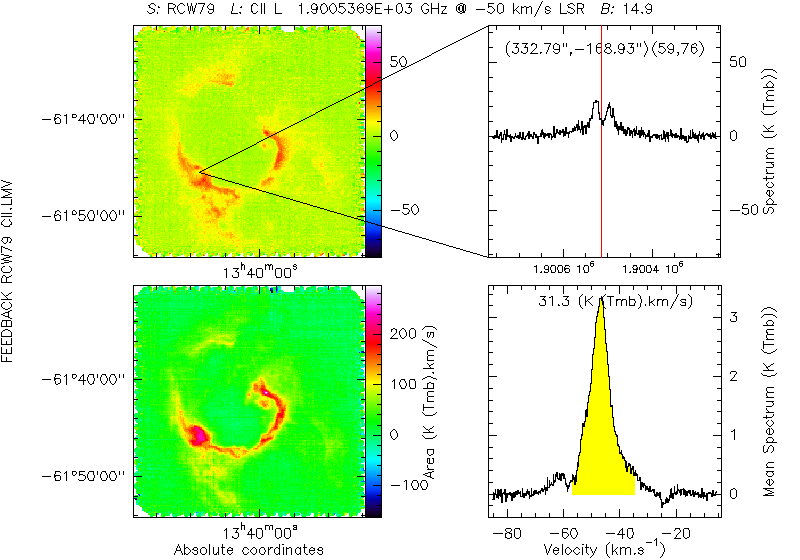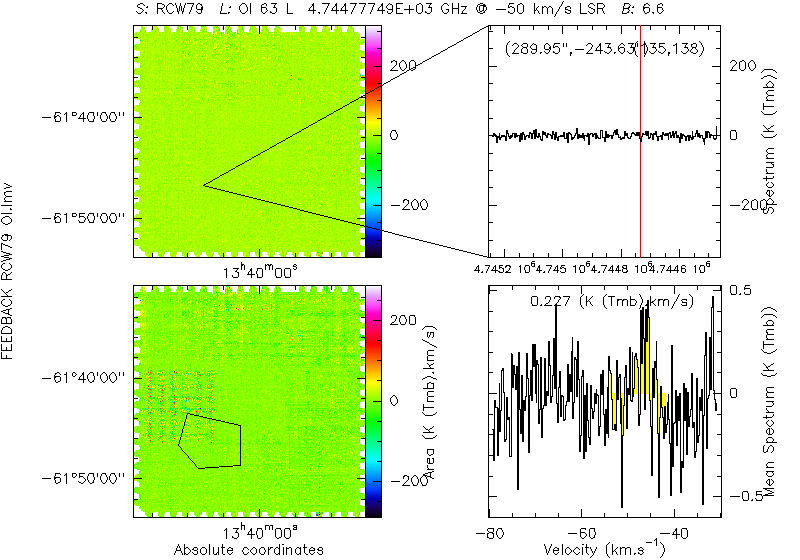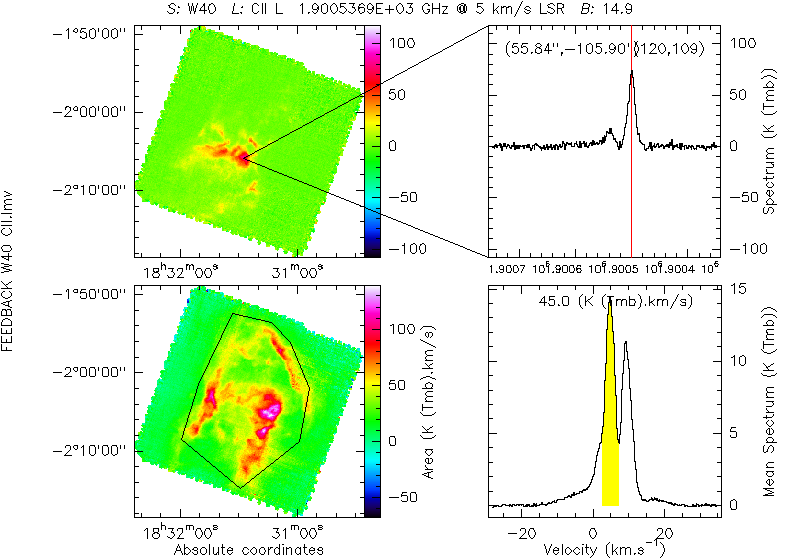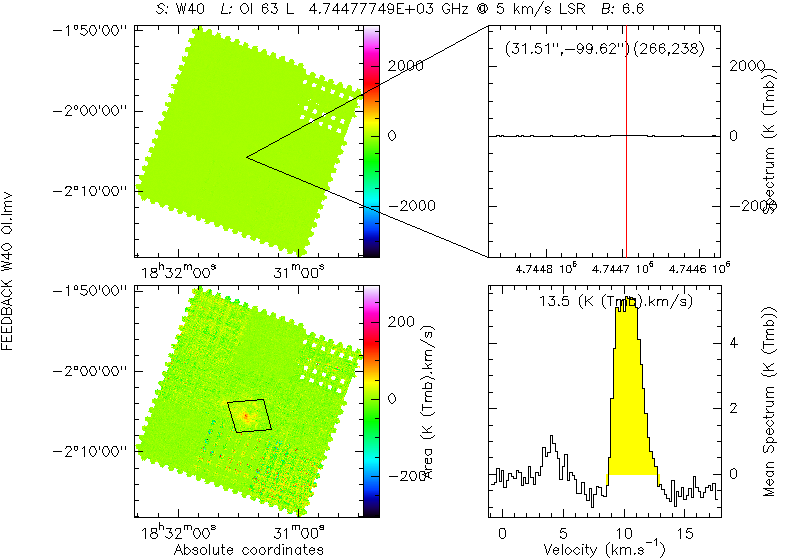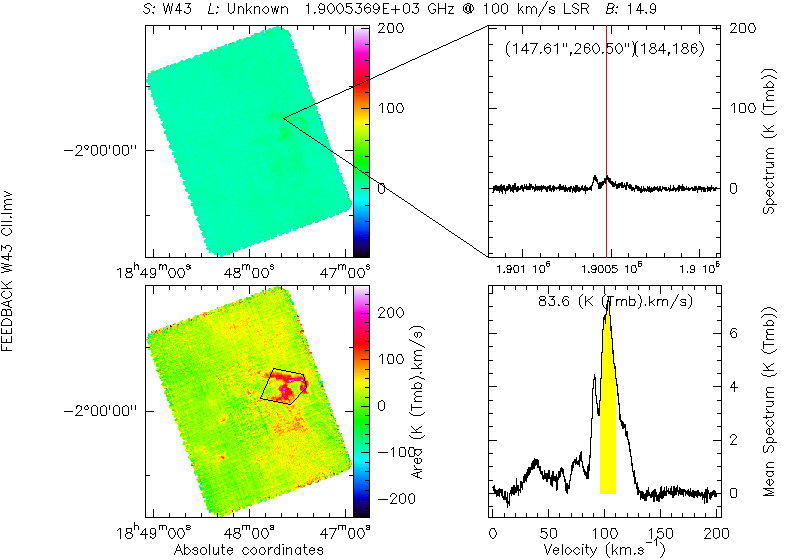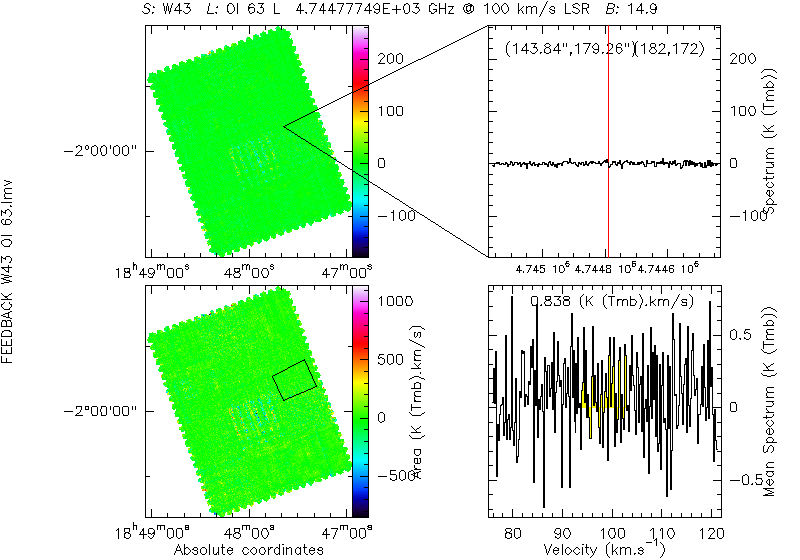Purpose of the Program
This program surveyed 11 regions including single O- or B-stars, small groups of O stars, rich stellar clusters, and mini starbursts, for a big-picture look at the interaction of massive stars with the interstellar medium throughout the universe.
Co-Principal Investigators
Alexander G.G.M. Tielens (University of Maryland) and Nicola Schneider (University of Cologne)
Proposal ID and Data Access
Proposal Abstract
Context: Massive stars stir up the ISM through their stellar winds, ionization & heating, radiation pressure, and supernova explosions. In addition, they photo-dissociate molecules and heat neutral atomic and CO-dark molecular gas through the photo-electric effect on large molecules and small dust grains. This mechanical and radiative feedback of massive stars on their environment regulates the physical conditions, sets the emission characteristics, influences the star formation activity through negative (molecular cloud dissolution) and positive (cloud compression) feedback processes, and drives the evolution of the ISM of galaxies. Understanding the physical processes that regulate the feedback of massive stars on their environment is a key question within modern astrophysics and a major theme of SOFIA's science.
Aims: We propose to use the [CII] 1.9 THz (157μm) line to study the interaction of massive stars with their environment in a sample of sources that span a range in stellar characteristics from single OB stars, to small groups of O stars, to rich young stellar clusters, to mini starbursts. The aim of these observations is to quantify the mechanical energy injection and radiative heating efficiency in regions dominated by these different processes (stellar winds, thermal expansion, radiation pressure).
Method: The proposed Legacy Program is developed to take full advantage of the unique capabilities of the upGREAT/SOFIA combination: The high spatial (14") and spectral (sub-km/s) resolution of the 14 element LFA upGREAT heterodyne spectrometer coupled with the nimble telescope of SOFIA allows for efficient mapping of the [CII] line over large (100's to 1000's of square arcmin) areas. With a total observing time of ~96h, we will cover ~6000 arcmin2 in 11 prominent Galactic sources.
Anticipated results: The [CII] line uniquely provides the kinematics of the gas exposed to the mechanical energy input by massive stars and therefore directly measures the mechanical energy injection into the medium. In addition, for low to moderate densities and UV fields, this line is the dominant cooling line of the gas, and observations then directly yield the radiative energy injection/heating efficiency of the gas. Thus, by surveying regions with a range of massive star formation activity, we will quantify the relationship between star formation activity and energy injection and the negative and positive feedback processes involved, and link that to other measures of activity on scales of individual massive stars, of small stellar groups, and of star clusters. These [CII] maps, together with the less explored [OI] 63μm line (observed in parallel), provide an outstanding data base for the community and will serve as a starting point for many studies and follow-up observations.
Synergies: ALMA studies of the red-shifted [CII] line are widely used as a star formation rate indicator in the far Universe but the relationship to local physical processes is poorly understood. Likewise, stellar feedback is a key ingredient in ΛCDM cosmological simulations. The proposed program will provide a ground truth for these types of studies and will leave a high and long-lasting impact on the field of high mass star formation and its feedback from local to cosmic scales.
Team websites
University of Maryland/University of Leiden
University of Cologne
Sources and Maps
RCW120
RCW120 is among the closest HII regions to the Sun, just 1.3 kpc distant (Zavagno et al. 2007). The ionized gas is 7.5' in diameter, for a physical diameter of 3.8 pc. Star formation is observed everywhere around RCW120. There are numerous massive condensations along the PDR. Star formation in the fragments along the PDR may have been triggered by the expansion of the HII region, although the simulations in Walch et al. (2011) suggest that they merely reflect density inhomogeneities in the cloud from which the HII region formed. Recent studies (Torii et al. 2015) suggest that the exciting O-star in RCW120 was formed by a collision between the present two clouds at a colliding velocity ~30 km/s.
Cygnus X
The Cygnus X region is one of the richest star formation sites in the Galaxy, excited by the Cygnus OB2 cluster that contains well over 100 OB stars. Most of the molecular clouds are located at a distance of 1.4 kpc, the total molecular gas mass is a few 106 M8 (average densities ~60 cm-3). The northern region contains the prominent SF regions DR21 and W75N that are located within dense filamentary structures. The average UV-field is high (~300 G0) and reaches peak values up to ~105 G0 in PDRs close to Cyg OB2.
M16
The Eagle Nebula (M16) is a young (1-3 106 yr), active high-mass SF region in Serpens (d » 2 kpc). Responsible for heating and ionizing the Nebula is the young open star cluster NGC6611, containing four early-type O stars, leading to a high average UV-field of ~300 G0. The transition between
HII region and dense, cold gas is rather sharp with many UV-illuminated features. In particular HST imaging of the “Pillars of Creation” has made M 16 iconic.
M17
M17 is located at a distance of 1.98kpc and associated with the highly obscured (AV > 10) cluster NGC 6618 with more than 100 OB stars. The total mass of the complex (from CO observations) is 2 104 M8 and it can be split into M17 North (M17-N) and M17 Southwest (M17-SW). For M17-N, density ranges between 104-105 cm-3 have been inferred. The region seems to be externally ionize by the nearby cluster. M17-SW has been studied extensively in many different tracers and frequencies. It has an edge-on geometry and the gas is highly clumpy. The density at the cores reaches ~ 6 105 and a UV field is ~ 104G0. A considerable fraction of the CII material outside the center velocities is not associated with the gas traced by CI and CO. A recent SOFIA [13CII] study reveals unexpectedly large columns of warm and cold CII.
NGC6334
NGC6334 is a very active star forming region with a remarkably large number of HII regions spread across the complex (7 compact and optical HII regions per square degree), most of them with a “bubble” morphology in the IR and FIR. The associated molecular cloud consists of a ~10 pc long filament that is also associated with strong extinction. The optical HII regions are excited by a few stars, the ionization of the radio HII regions, NGC 6334I and NGC 6334E, is due to a rich embedded young cluster and a cluster of B-stars, respectively. The average UV-field is high (~580 G0).
NGC7538
NGC 7538 is a relatively nearby (2790 pc) region of high-mass star formation and an excellent place to search for the precursors of future high-mass stars. Shows some interesting structures, including a large ring structure visible surrounding an IRDC. Fallscheer et al. (2013) report no obvious O and B stars in the ring structure, there is an A0 star within the ring, and the nearest known B star is east of the ring. Given the lack of suitable stars at the bubble center, the fact that CO observation shows that the bubble is closed, and the elongated nature of the bubble suggest that the bubble is breaking out of the molecular cloud to the south-west.
RCW36
RCW36 at a distance of 700 pc within the Vela C molecular cloud consists of an HII region with a cavity of ionized gas surrounded by molecular gas, a star cluster inside, and a dust lane that crosses the cavity. An embedded cluster (~350 members) with the most massive star being a type O8 or O9 is located within the cavity. The cluster extends over a radius of 0.5 pc, with a stellar surface number density of 3000 stars pc-2 within the central 0.1 pc. Herschel studies suggest that the bipolar morphology is an evolution of its filamentary beginnings under the impact of ionization.
RCW49
The bubble HII region RCW49 is ionized by the rich stellar cluster Westerlund 2. Both sources are located at a distance of 5.4 kpc. There are two molecular clouds in the velocity range -11 to +9 km/s and 11 to 21 km/s, respectively, that correlate well with Spitzer/IRAC mid-IR images of RCW 49.
RCW79
RCW79 is a nice example of a Galactic bubble region catalogued in the GLIMPSE/Spitzer survey. It is the logo of the FEEDBACK program. Based on Herschel data, more than 50 compact sources (Class 0 and I) were found in the ionization-compressed layer of cold and dense gas from which 12 are candidate massive dense cores that may form high-mass stars. The core formation efficiency (CFE) shows an increasing trend of the CFE with density, suggesting that the denser the condensation, the higher the fraction of its mass transformation into dense cores. The RCW79 bubble is ionized by a cluster of a dozen O stars, the two most massive of which have a spectral type O4-6V/III. The ionizing luminosity of the ionizing stars was estimated to be 103 times higher than the mechanical luminosity of their stellar winds, indicating a radiation driven HII region. RCW79 is spatially encompassed by an almost complete dust ring, with a diameter of 12’ (12.8 pc at a distance of 4.3 kpc).
W40
The W40 complex is a nearby site of high-mass star formation associated with a cold molecular cloud (~104 M8) and includes a blistered HII region powered by an OB association and two interconnected cavities, forming an hour-glass shape on large scales. The main cluster is located just northwest of the narrow waist where the two cavities are joined. The bright-rimmed clouds at the cavity walls show clearly that dense clumps and pillars are illuminated from inside by the cluster. The OB association is comprised of IRS/OS1a (O9.5), IRS/OS2b (B4) and IRS/OS3a (B3) and an associated stellar cluster of pre-main-sequence (PMS) stars.
W43
The W43 "mini-starburst" region in the molecular ring near l =30.8˚ is one of the most luminous star forming complexes in the Galaxy (Motte et al. 2003). Located at a distance of about 5.5 kpc at VLSR » 85 to 107 km/s, W 43 contains a giant H II region powered by a cluster of OB and Wolf-Rayet stars emitting a Lyman continuum luminosity of about 1051 ionizing photons per second (Smith et al. 1978; Lester et al. 1985; Blum et al. 1999). The H II region is in contact with a 20 pc diameter giant molecular cloud (GMC) with a mass of about 106 M8 (Liszt 1995) and a total IR luminosity of ~3.5 106 L8 (Lester 1985). Motte et al. (2003) identified about 50 clumps with masses ranging from 40 to 4000 M8 in 350 and 1100 µm maps of the dust continuum (From Bally et al. 2010)
